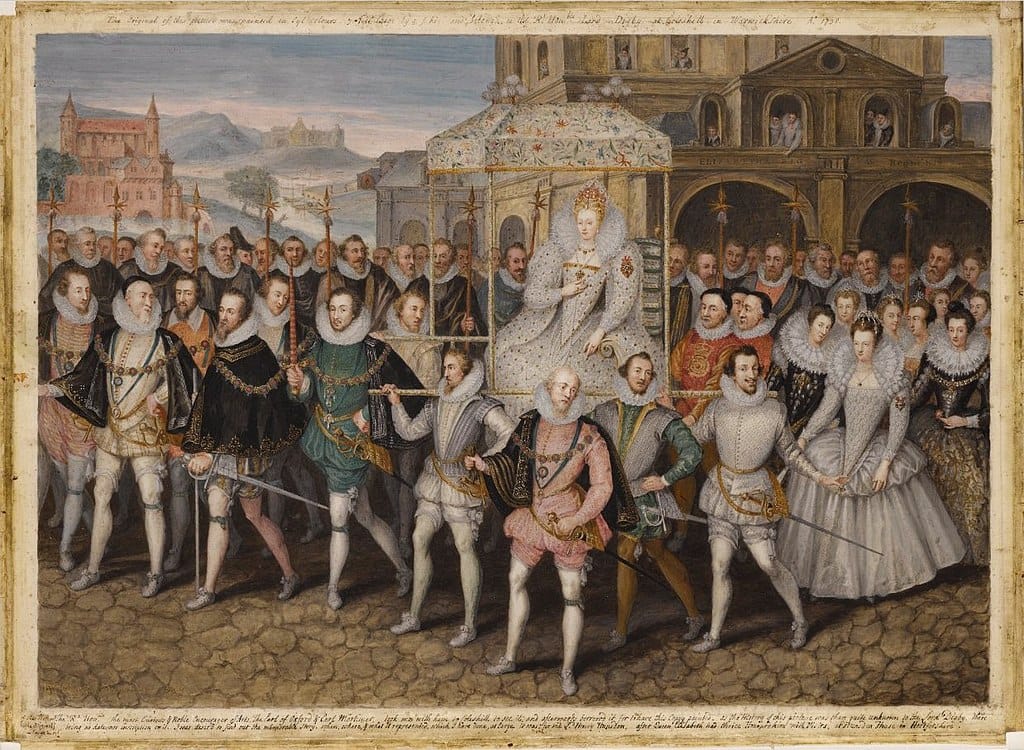Step back in time to the 16th century, a world where kings and queens ruled and ordinary people lived vastly different lives. Want to know what England was really like during this fascinating era? We’ve got you covered. This guide will take you on a journey through the political drama, religious changes, and everyday lives of everyday folks in 16th-century England. Get ready to dive into a time of knights, castles, and a rapidly changing world.
Unraveling the Mystery of Early Communication
Imagine England in the 1500s, a time of kings and queens, dramatic shifts in religion, and the burgeoning knowledge of the Renaissance. It was also a time when the way people communicated was changing. Letters weren’t just private notes anymore – they were the email of the day, buzzing with news, political intrigue, and the latest gossip. This is where “heremail” enters the scene, a term shrouded in mystery, leaving historians scratching their heads. Was it a real postal system or a misunderstood piece of the communication puzzle? Let’s dive in!
Now, picture this: no smartphones, no instant messages, not even a reliable postal service as we know it. Yet, news and information still had to travel. This is where letters took center stage, blossoming into a powerful tool. With more people learning to read and the printing press cranking out books and pamphlets, the written word was suddenly everywhere.
Of course, someone had to actually write those letters, especially for those who hadn’t mastered the art of writing. Enter the scribes, the penmanship pros of their time. They would carefully craft messages, ensuring every word was just right. Then came the crucial part – getting those letters delivered. Wealthy folks and government bigwigs relied on messengers, brave souls who would set off on sometimes dangerous journeys, carrying these precious letters across the country. Time was of the essence. A delayed letter could mean a missed opportunity, a political blunder, or even worse!
These letters were more than just messages; they were like time capsules, offering us a peek into the hearts and minds of the people who lived back then. They spill the tea on everyday life, the whispers of courtly drama, and the big debates that shaped England’s future. They reveal personal joys and sorrows, religious squabbles, and the intellectual buzz of the age.
This brings us back to “heremail.” While there’s no smoking gun proving a fully formed postal system existed in 16th century England, the word itself hints at something more organized than just random messengers. Some historians believe “heremail” might have been an early, informal version of mail delivery, a network operating in the shadows. It’s a tantalizing idea that needs more digging.
The story of 16th-century communication, with “heremail” at its heart, reminds us that even in a world without instant communication, people were deeply connected. The exchange of letters, whether through official channels or a mysterious “heremail” network, wove a tapestry of human connection across England. As we continue to uncover the secrets of this intriguing period, one thing is certain – those Tudor letters still speak volumes, whispering tales of a world on the cusp of change.
From Foot Messengers to Penny Post: Mail Delivery in the 1600s
How was mail delivered in the 1600s? Picking up where we left off, let’s delve deeper into the intricate world of 17th-century mail delivery. Imagine a time without cars, trains, or even bicycles! Delivering a simple letter was a real adventure. The year 1635 marked a turning point when King Charles I made the groundbreaking decision to open up the previously royal-exclusive postal system to the public. Prior to this, only the King and his court enjoyed the privilege of a structured mail system.
Foot messengers, often trudging through muddy paths and rough terrain, were the backbone of the postal system. For longer distances, horseback riders galloped across the land, facing not only the elements but also the looming threat of highwaymen eager to snatch valuable packages. These brave souls relied on a network of “posts” – think of them as early post offices – scattered across the country. Here, they could rest, swap horses, and most importantly, have their bundles of letters sorted and relayed to the next available messenger.
Life in the big city, however, called for a faster pace. In the bustling heart of London, William Dockwra introduced the innovative London Penny Post in 1685. This system revolutionized urban mail delivery, offering Londoners an affordable way to send letters under one pound within the city limits. Dockwra’s system was ingenious, dividing London into seven postal districts, each equipped with its own sorting office, and provided multiple deliveries per day in highly populated areas.
Of course, no system is without its hiccups. Letters could take ages to arrive, especially if the weather decided to throw a tantrum and poor road conditions slowed travel. Highway robbery remained a constant threat, and let’s just say that unreliable post boys, driven by low wages, sometimes resorted to robbing mailbags.
To address these challenges, Parliament took action in 1657 by passing the Postage Act. This act brought much-needed stability to the system by establishing fixed postal rates. The act stated, “Whereas it hath been found by experience, That the Erecting and Settling of one General Post-Office, for the speedy Conveying, Carrying, and Re-carrying of Letters by Post, to, and from all Places within England, Scotland, and Ireland.” The introduction of fixed rates, however, didn’t stifle competition. In fact, hundreds of private carriers emerged, offering their services alongside the official postal service.
This era of mail delivery in the 1600s, though seemingly simple compared to our modern world, was a testament to human ingenuity and determination. It laid the groundwork for the complex and efficient postal systems we often take for granted today.
Unveiling the Horrors of a Century Ravaged by Disease
Was there a plague in England in the 16th century? You bet there was, and it was a real downer. The 16th century in England wasn’t just defined by the reign of the Tudor monarchs; it was an age ravaged by recurring plagues that transformed English cities into graveyards. Imagine a London where one-third of the population vanishes in a matter of months – this was the reality of the 1563 plague, England’s deadliest outbreak, surpassing even the infamous Great Plague of 1665.
This nasty disease, spread by fleas hitching rides on rats, wreaked havoc across the country. We’re talking major outbreaks in 1563, another in 1592-1593, and a bunch of smaller ones popping up like unwanted party guests throughout the century. While the Great Plague of 1665 might be more famous, it was merely the gruesome finale of a century where plague cast a constant, menacing shadow over England.
Imagine living in a time when a simple flea bite could mean serious trouble. The plague was a terrifying reality for the people of 16th-century England. In cities, where people lived in close quarters, the plague could wipe out a scary percentage of the population. Just think about London in 1563 – historians estimate that a whopping 20,000 people, likely a third of the city’s inhabitants, died during that outbreak. And it wasn’t just dying that was terrifying; getting sick was awful too. Many more people would have suffered from the plague’s debilitating symptoms than actually died from it.
So, what made this plague so awful? Well, it all starts with a bacterium called Yersinia pestis. This little troublemaker hitched rides on fleas, which in turn, loved to hang out on black rats. One bite from an infected flea, and this nasty bacteria would enter the bloodstream, causing lymph nodes to swell into painful lumps called buboes – hence the name “bubonic plague.” But wait, there’s more! The plague could also morph into even worse forms like septicemic plague (blood poisoning) and pneumonic plague (affecting the lungs). Needless to say, these complications often proved fatal with the limited medical knowledge of the time.
Living with the constant threat of plague outbreaks, people were understandably scared. Imagine the fear and uncertainty that must have permeated daily life. To try and stop the spread, authorities implemented quarantines, isolating the sick from the healthy. However, their understanding of how the disease spread was quite limited, so these measures weren’t always effective.
The effects went far beyond the death toll. The plague brought trade to a standstill and disrupted everyday life. It also left a deep psychological scar on society, influencing religious beliefs, how people viewed death, and even how medicine was practiced.
In a way, the plague forced England to evolve. People started paying more attention to sanitation and hygiene, and new medical treatments, although rudimentary by today’s standards, were developed. The repeated brushes with mortality also led to a shift in religious perspectives and a growing skepticism toward traditional explanations of disease. The plague’s impact on population size and demographics had long-lasting consequences, shaping the social and economic landscape of England for centuries to come.
Beyond “Elizabethan”: Unpacking the Nuances of 16th Century England
What was the 16th century England era called? Now, let’s dive into how we can best understand this exciting period in English history. Imagine trying to explain a complex event like a big family reunion to someone who wasn’t there. You wouldn’t just list everyone’s names – you’d talk about the family dynamics, the stories, and the important relationships. That’s where the idea of an “instructional guide” comes in handy for the 16th century.
Think of this guide as a roadmap, not just a list of facts. We’re talking about a time period often called the Tudor period (because, you guessed it, the famous Tudor family was in charge!). Some folks also call it the Early Modern period – a hint that things were changing rapidly, moving away from the medieval world and towards the world we know today. However, to truly understand the 16th century, it’s important to move beyond simplistic labels and explore its multifaceted nature.
While the “Elizabethan Era” is a popular term, focusing solely on Queen Elizabeth I’s reign limits our understanding of this transformative century. Yes, Elizabeth I’s rule was a defining moment, often referred to as a “Golden Age” for its relative peace, economic growth, and the flourishing of arts and literature. But the 16th century was much more than one monarch’s reign.
To fully grasp the era, we need to consider:
- The Entire Tudor Dynasty (1485-1603): From Henry VII, who ended the Wars of the Roses and established Tudor dominance, to Henry VIII’s tumultuous reign marked by the English Reformation, each Tudor monarch left an indelible mark on England.
- The English Renaissance (c. 1500-1660): This period witnessed an explosion of artistic and cultural achievements, mirroring the earlier Italian Renaissance. From the works of literary giants like William Shakespeare and Christopher Marlowe to the rise of English theatre, the Renaissance spirit infused the 16th century with creativity and intellectual curiosity.
- Early Modern England (c. 1485-1750): This broader historical period encompasses the social, economic, and religious transformations that were reshaping England. The 16th century witnessed the ongoing impact of the English Reformation, the growth of cities and trade, and the slow but steady rise of literacy, all contributing to the shift from a medieval to a more modern society.
By looking beyond simple labels and delving into the complexities of its dynasties, cultural movements, and social changes, we can truly appreciate the 16th century as a pivotal period in English history – a time of both great upheaval and remarkable transformation.
The Stuarts & Beyond: Unmasking England’s 17th Century
What was the 1600s era called in England? The 1600s in England, often overshadowed by the preceding Tudor dynasty, marked the dawn of the Stuart era, a period of dramatic religious and political upheaval that would come to define the nation’s identity. While it might not have a catchy nickname like the “Renaissance” or the “Victorian era,” historians generally refer to the 1600s in England as simply the 17th century. However, don’t let the straightforward name fool you – this era was anything but simple!
The 17th century began with the end of an era – the Tudor dynasty came to a close with the death of Queen Elizabeth I in 1603. In her place stepped James VI of Scotland, a descendant of Henry VII, uniting the crowns of England and Scotland under his rule as James I of England. This transition from the powerful Tudors to the relatively untested Stuarts created an atmosphere of uncertainty and laid the groundwork for the conflicts that would come to characterize the 17th century.
One of the most significant forces shaping England during this time was religion. The English Reformation, which had begun in the 16th century, continued to send shockwaves through society, challenging the established Church of England. A group known as the Puritans emerged within the Protestant movement, advocating for a stricter, more “purified” form of worship. This clash of religious ideologies created deep divisions within the country, ultimately fueling the fires of the English Civil Wars (1642-1651).
The English Civil Wars marked a pivotal moment in English history, pitting the monarchy against Parliament in a bloody struggle for power. The conflict culminated in the execution of King Charles I in 1649 – an act that sent shockwaves throughout Europe. This unprecedented event ushered in a short-lived republic called the Commonwealth, led by Oliver Cromwell as Lord Protector. However, the monarchy was restored in 1660 with Charles II taking the throne.
The 17th century wasn’t just about religion and political upheaval; it was also a time of great intellectual and artistic flourishing. It’s often referred to as the Golden Age of English literature, producing literary giants like William Shakespeare, John Milton, and John Donne. Their works continue to captivate and inspire audiences centuries later.
The echoes of the 17th century resonate even today. The seeds of revolution sown during this tumultuous era eventually blossomed into the Glorious Revolution of 1688. This event established parliamentary supremacy, fundamentally reshaping the relationship between the ruler and the ruled, and cementing England’s path toward a constitutional monarchy. To truly understand the 1600s in England is to uncover a complex tapestry woven from religious conflict, political intrigue, and a flourishing artistic scene – a period that laid the foundation for modern Britain and continues to shape our world today.
- Did you know that the Spanish explorer Spanish explorer 1540 landed in Mobile Bay? Although we don’t know his name or the name of his ship, we know he was here in 1540. You can learn more about his fascinating story by clicking on the link.
- Have you heard about element 115 lazarium? It has some intriguing properties. Scientists are still studying it. Click the link to learn about its fascinating properties.
- Are you a fan of the curse of oak island abbey road? You can find out more about their story and their music by clicking on the link.
- Unlock Filipino Culture: A Deep Dive into Traditions and Practices - April 23, 2025
- Unlock Spanish Culture: Insights & Opportunities Now - April 23, 2025
- White Spirit Uses & Substitutes: A Deep Dive for Pros & DIYers - April 23, 2025
















